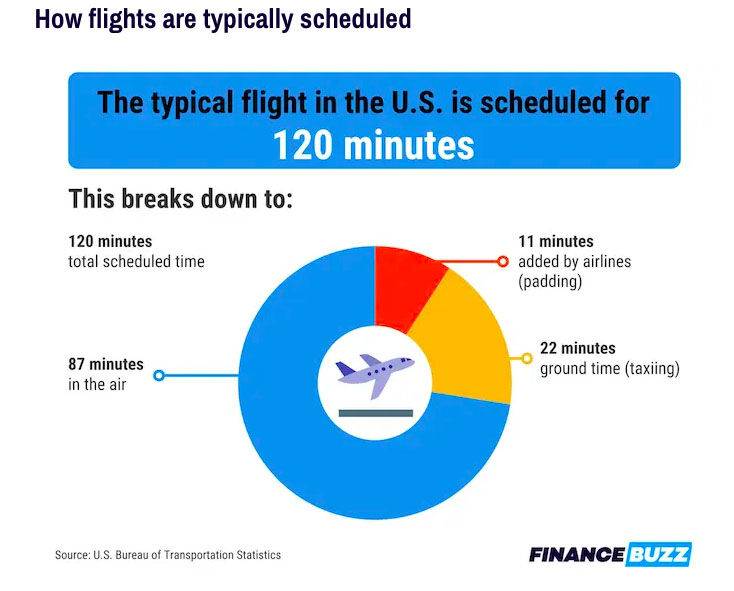Air travelers are often pleasantly surprised if their flight arrives at its destination early, but airlines are padding their schedules to improve their on-time arrival stats.
Personal finance site Finance Buzz analyzed the U.S. Department of Transportation’s Bureau of Transportation Statistics data going back years, covering 35 million domestic flights. Since 2012, the frequency of flight duration padding has increased by 27%, Finance Buzz reported. It is an average of just over 10%.
In 2022, 20% of domestic flights arrived at their destinations late, but without that padding, it would have been 30%, its research found.
At Reagan National Airport, the average domestic flight duration schedule was padded by 10 minutes, but given the relatively short duration of a DCA departure — of just over 90 minutes — it is an average padding of 10.8%. Reagan National ranked No. 13 for average padding by airlines in 2022. At BWI Marshall, the average padding was 11% last year.
Finance Buzz did not include data on Dulles International Airport in the 40 U.S. airports it analyzed.
Dallas Love Field topped the list, with the average duration of a scheduled flight fudged by 20.7%. That was followed by Charlotte Douglas International at 16.7% and George Bush Intercontinental at 16.2%.
By airline, Southwest Airlines padded flight times the most in 2002, an average of 13.9%, followed by Alaska Airlines at 11.3% and United Airlines at 10.3%.
Hawaiian Airlines was at the bottom of the list, at 4.7%.
The Bureau of Transportation Statistics defines a delayed flight as one that arrives more than 15 minutes after it is originally scheduled, so the additional minutes add up in the airlines’ favor.
A flight’s duration can also be impacted favorably or unfavorably by things in addition to delayed departures, such as headwinds and tailwinds, or gate availability at the arriving airport.
No traveler likes a flight delay.
“The airline apps have made it easier for passengers to keep up with potential delays. Sometimes the messages in the apps are ahead of what they know at the gate,” said David Bruce Smith, chair in marketing at the Robert H Smith School of Business at the University of Maryland.
“Besides purchasing travel insurance and reading the small print on the insurance policies, there really aren’t many, or any, strategies that passengers can use to protect themselves from delays,” he said.
Below is a breakdown of a typical two-hour domestic flight in the U.S.









